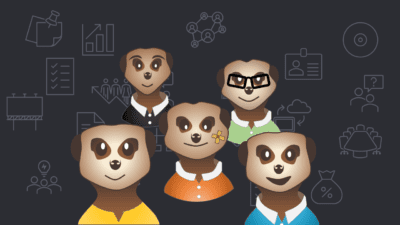This is the second part of a series, the first part is Guide: Build a community with Microsoft Teams. Which took you through the licenses and setup, this guide will take you through the work needed to make it thrive.
Owners and moderators
As an owner of the team you need to have an account on the tenant, but moderators can be guests (no license required). I would recommend that every topic has at least one dedicated moderator (although one moderator can be dedicated to more than one channel).
My best tip; don’t try to do it on your own, get people to join. For moderators to work well you need to hand pick people who help both engage the community as well as ensure that the community rules are followed.
Running a community, the management
First things first, you need to get the members. How many depends on the purpose of your community and who you want to have in it. If it’s a limited group that’s ok, but for this article we expect the community would be continuesly growing.
Moderators or inspirators
Why do we need moderators? Well we don’t, a Teams community isn’t like a social media channel, but the term is used here due to it being a function in Teams. What a community needs are inspirators that engage with relevant information. People who are skilled or just entusiastic about their main topic.
So for a Teams community it’s engaging people is important, this is because for most people they either have their own tenant they usually work in, or they are no active teams users.
Channels, their function and purpose
This is one of the main topics when working with Microsoft Teams.
Main channels in a community
From the previous article I mentioned four channels, let’s explain them in more detail.
General
This is the main channel, the first people join and a place for system messages.
Add general information such as rules, a sharepoint site and intro video here, since this is the first channel people check.
If you use the SharePoint news, this channel can have the news connector to post the latest and greatest.
Who can post: Only admins
🎙 Introduction
A place for everyone to introduce themselves.
This explains itself, so how to engage people to reply? Either ask them personally when they join or make a post each week with the ones who’ve joined and ask them to present themselves.
Who can post: Everyone
📢 Announcements
Information from the Community leaders.
This is a great place to link the internal articles handpicked by the community leaders, important information to all and events of notice.
Who can post: Owners and Moderators, anyone can comment.
🥇 Moderators
A private channel for moderators to communicate.
It’s important that moderators and owners collaborate around internal discussions, rules and incidents. In addition to handle communicaton plans such as community news and avents.
Who can post: Owners and Moderators
How many channels should we have?
A channel is a “room” dedicated to a topic or a subgroup. But don’t start with too many of the, my rule of thumb is:
A good number is based on the number of post in each channel. So minimum one post per week, but not more than three per day on average. If there are too many post, your team members won’t be able to keeping up with the information.
Start with your main subjects, and add channels as needed over time.
Engage with the community
With the community haveing rooms for discussions, moderators to inspire and members. Now it’s time to engage and make it thrive.
Teams communities aren’t like sosial media communities. Since this tool is made for business, most members will have a main tenant that, and they have to swap to use this. You can solve this by having another instanse as a web app (article pending).
With that in mind, @mentions are both important and a nuciance. For it to be an important tool we need to limit it within reason.
Inspireing
Every channel need a dedicated moderator/inspirator that will make sure the channel thrives. Present them in a post and pin it (even though pinned posts are semi-hidden). Share at least relevant posts once a week in a channel that have low engagement, and if there are none it might be time to delete it. Dead channels don’t add to the experience.
@mention to a degree
@team should be limited to admin only, @channel can be used by all. It’s also good to add guide on how to turn on and off notifications. It’s also important to decide when it’s appropriate to use the @channel feature to avoid misuse.
@moderators should be a tag so the members than flag the group if needed.
Lead with statistics
Anyone in a team can see the statistics, but it’s especially important for owners and moderators. Check it regulary to see if you have success with engaging people.
